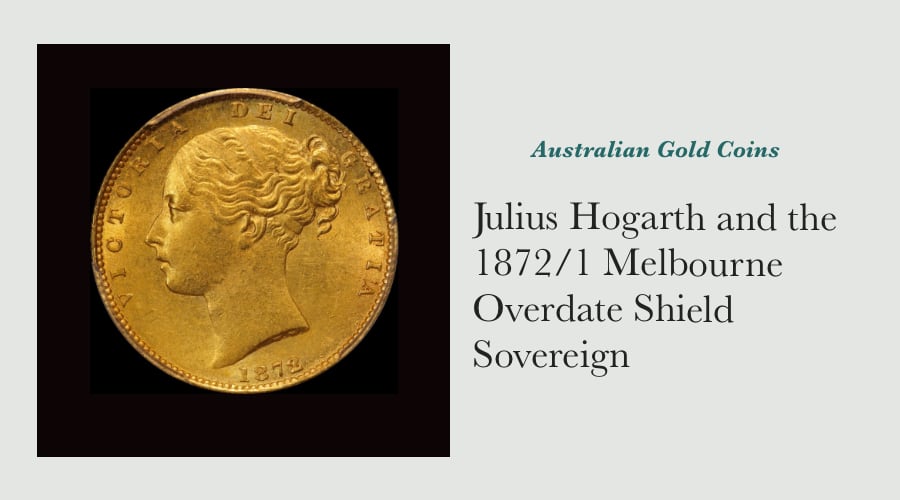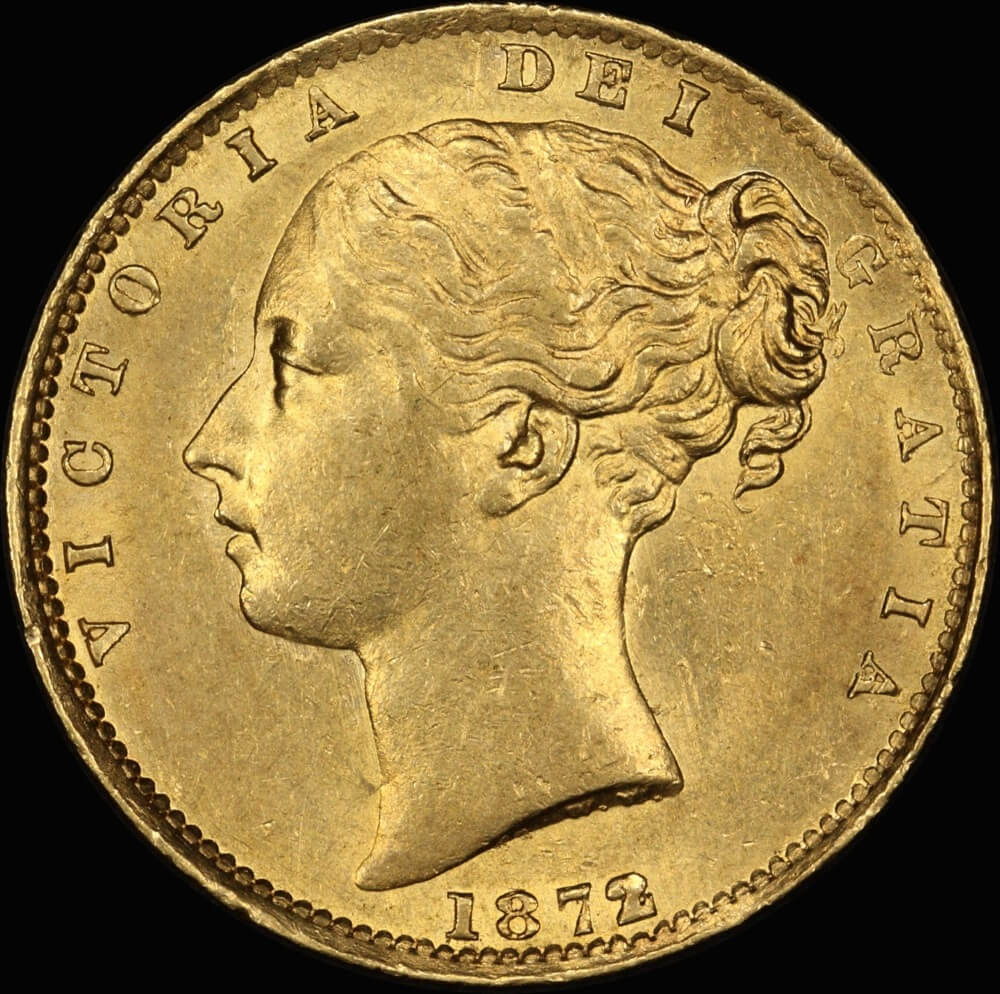Julius Hogarth and the 1872/1 Melbourne Overdate Shield Sovereign

Before the Melbourne Mint's very first coins were struck during the official opening ceremony by the Governor of Victoria, Sir John Manners-Sutton, on June 12th 1872, the early months of the Melbourne Mint were fraught with difficulty. Prime among the problems the Royal Mint staff faced was the complete loss of a vital batch of dies in a shipwreck off the coast of Ceylon (Sri Lanka) in November 1871.
While making his initial preparations for the establishment of the Melbourne Mint, the Royal Engineer in charge, Colonel Fred Ward, requested that dies dated 1870 and 1871 be provided. Ward's request for dies dated 1870 was declined, and he was provided only with dies dated 1871.
The Second Batch of Dies Sent to the Melbourne Mint Sank In A Shipwreck
As most of the new Mint's staff did not arrive in Melbourne until January 1872, these dies quickly became obsolete, and Ward was forced to request a second batch of dies, this time dated 1872.
These dies were transported from London by the RMS Rangoon and unfortunately went down with the Rangoon when it sank in the Port of Galle (Ceylon, now Sri Lanka) in November 1871.
Once the Royal Mint became aware of the fate of the second batch of dies, a third batch was sent in two parcels - these arrived in Melbourne in April & May of 1872.
Despite their best efforts, the efficiency of the Melbourne Mint’s coin production in the early days was unfortunately far below acceptable standards.
One means by which that inefficiency was measured was the (relatively limited) number of sovereigns that the Melbourne Mint was able to strike from each pair of dies that had been allocated to it. Far more dies were being used to the limits of their capacity and then destroyed than had been anticipated.
Given the significant lead time involved with replacements arriving from London, the Melbourne Mint could well have run out of dies altogether before the end of 1872 - an altogether unthinkable situation.
In an attempt to make the most of the Mint’s scarce resources until additional dies arrived from London, Colonel Ward engaged the services of a Danish jeweller named Julius Hogarth.
Temporary Help from a Danish Jeweller
Hogarth had arrived in Australia via Sydney in 1852, in the company of a Norwegian jeweller named Conrad Erichsen. Together, their jewellery business enjoyed a solid reputation, and produced some of the most expensive and keenly sought jewellery & sculpture made in Australia at that time.
With their exceptional technical skills and creativity, they emerged among the first artisans in Australia to incorporate local flora and fauna in decorative art. They are also well known among numismatists for the small number of silver threepence tokens they issued between 1858 and 1860 - these tokens remain eminently collectable today. Unfortunately, their business skills were not equal to their technical skills, and by 1860, Hogarth and Erichsen were bankrupt.
Julius Hogarth had travelled to Melbourne in 1866 with the specific aim of gaining employment at the new branch mint, Ward’s commission required him to experiment with the production of dies.
Although it is relatively widely known that Hogarth altered dies as part of his work for the Melbourne Mint, there is not yet any published information available that details how many of the four or five stages of the die production process Hogarth was able to complete.
The manufacture of dies is a long, complex and specialised task, and each stage must be executed without fail if the end product is to be manufactured to the level of quality required by a national Mint. As this process requires a deep level of specialised skills, it should not be surprising that despite Hogarth's acknowledged talents, he regarded his effort at producing dies as “a failure altogether”.
Alteration of the Last Digit in the Dies to Extend Their Life
Hogarth then had the idea to alter the last digit of the 1871-dated dies that were among the first batch sent out from London, so that they could be used if a complete lack of alternatives required it.
The result of this work remains evident for collectors today - essentially, Hogarth added a number “2” to the date of sixty obverse dies, and although his work significantly increased the number of coins the Melbourne Mint was able to produce during 1872, as the number “1” can still be seen under the “2” on numerous 1872 Shield sovereigns available to collectors today, it cannot be regarded as impeccable work.
This intervention by a sub-contractor in the Royal Mint's normally rigidly controlled manufacturing process is without parallel in the history of the Royal Mint.
The third batch of dies ordered by Ward in July of 1872 arrived in Melbourne in October of the same year, these allowed the Melbourne Mint to continue striking coins and refine their production process without fear of running out of dies.
Few Australian sovereigns have an element of intrigue about their rarity as the 1872/1 Melbourne overdate.
That this officially recognised variety is explained by such momentous events as a shipwreck and the work of a jeweller in altering coining dies only adds to the coin's appeal.
They remain a tangible reminder of the ingenuity required of many who travelled to the Australian continent in the middle of the 19th century seeking their fortune on the goldfields.